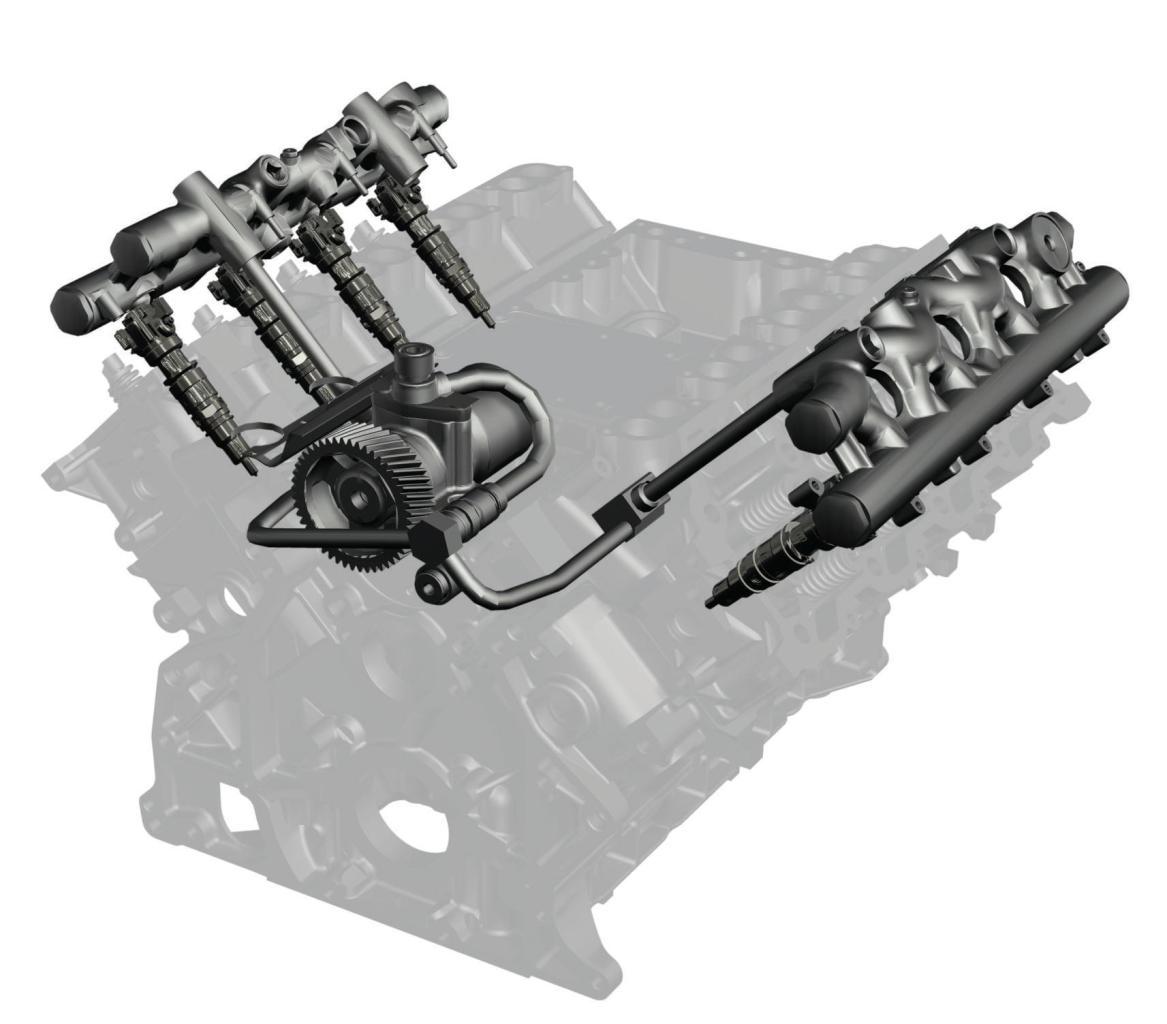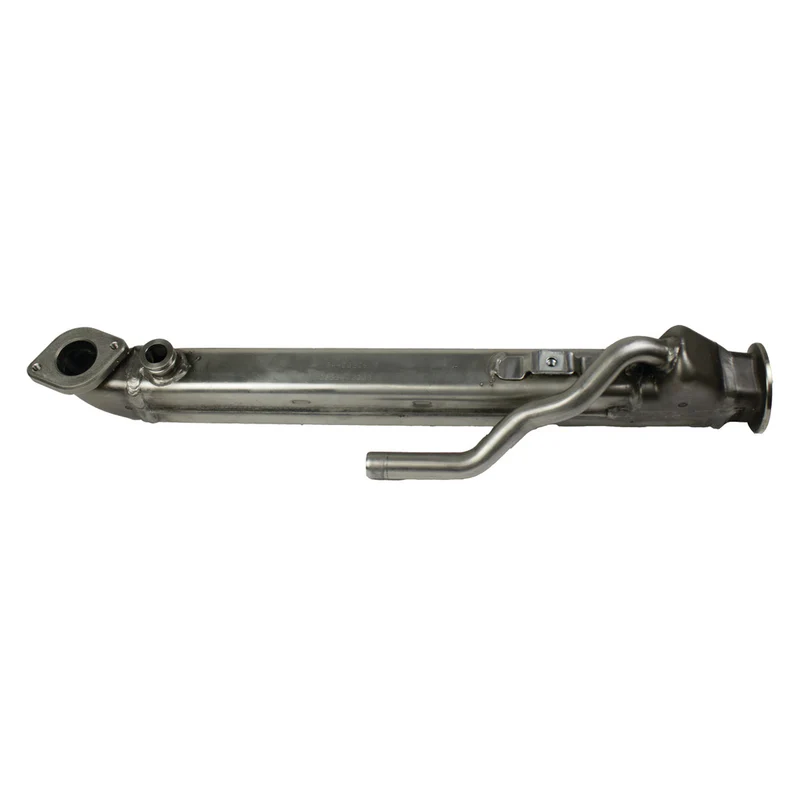8 Common 6.0 Powerstroke Problems & How to Fix Them
Ford's 6.0 Powerstroke suffers a number of common engine problems, some of which are quite expensive to fix and some that can do some serious engine damage. It has issues with the oiling system, cooling system including both the EGR and oil coolers, EGR valves, fuel injectors, turbocharger, head gasket, and fuel injector control module.
We've written an article on bulletproofing the 6.0 Powerstroke - which is essentially fixing all of these weaknesses by upgrading the components with stronger parts, ultimately making the 6.0 Powerstroke a reliable engine. In this guide we are going to cover all eight of the major problems with the 6.0 Powerstroke. Additionally, I will discuss which of these parts can be upgraded to prevent failure and the array of other engine problems they can cause.
6.0 Powerstroke Engine Problems
- Oil Cooler Failure
- High Pressure Oil System & HPOP
- Clogged EGR Valve
- EGR Cooler Failure
- Fuel Injector Control Module
- Fuel Injector Failure
- Stuck Turbo Vanes
- Blown Head Gaskets
1) Oil Cooler Failure

Oil cooler failure is probably the #1 most common problem on the 6.0 Powerstroke. It is also the cause of a lot of other problems on these engines and is pretty serious in nature. Over time the oil cooler becomes less efficient as it clogs up from leftover sand and debris from the engine casting process. It ultimately creates a coolant flow blockage that causes oil temperatures to skyrocket.
It can then go on to block flow to the EGR cooler causing that to fail and can blow head gaskets if it's not caught early enough. If your oil temps start getting close to the 230-degree mark or higher then you should consider replacing the oil cooler.
Oil Cooler with Gaskets: $224.99 from PPE
Coolant Filtration Kit: Prevent Failure
If you have an old 6.0 Powerstroke with the factory oil cooler you probably need to replace it anyways. But to prevent failure on a new oil cooler it's a good idea to install a coolant filtration kit. Much of the issues with the coolant come from all the casting sand stuck inside the engine - a filtration kit will capture all that sand and remove it from the cooling system. Ultimately replacing the oil cooler and getting a coolant filtration kit is pretty affordable so it's definitely worthwhile.
Coolant Filtration Kit: $164.95 from Mishimoto
2) High Pressure Oiling System & HPOP

The fueling system on the 6.0 Powerstroke operates via oil pressure, making the HPOS or high pressure oil system very important. One of the main components of this is the oil pump, or HPOP. Both the HPOP and various other parts of the oiling system like stand pipes, rail plugs, and branch tubes are prone to failing or leaking pressure which predominantly causes a no-start situation since it cuts off fueling.
There are a few things to be aware of here:
- Check for oil leaks from the pipes, plugs, and tubes
- The IPR valve could be clogged
- HPOP filter can be clogged or deteriorated
- If none of the above you probably have HPOP failure
Upgrading the HPOP
2003-2004 models have a stronger HPOP than the later models - but both are very common failure points. One of the best ways to prevent an issue with this system is to upgrade to a better HPOP.
However, the HPOP usually just causes a no-start situation so it generally makes sense to replace it after it fails instead of preventatively. For this reason we usually don't include an HPOP upgrade in a Bulletproofing kit. Upgrades are going to run closer to about $1,200 vs $700 or so for an OEM replacement.
3&4) EGR Issues: Valve & Cooler
Next up is issues with the EGR emissions system. This is two-fold: the EGR valve is prone to clogging and the EGR cooler is known to fail, which can be caused by a bad or weakened oil cooler but also commonly happens on its own. As such, upgrading the factory EGR cooler is something we always recommend when bulletproofing. When the cooler gets clogged it causes excessive heat that can bend rods and ultimately cause complete engine failure.
The EGR valve on the other hand can be fixed by simply removing it and cleaning all the debris out of it. It is a good idea to pull and clean the valve every 10,000-15,000 miles which will also help improve the reliability of the cooler too.
BD Diesel EGR Cooler for $436.95

5) FICM Low Voltage
The fuel injector control module slowly fails over time usually due to weak batteries. As your batteries weaken it causes damage to the internal circuits on the FICM which decreases the amount of voltage that the module can send to the injector coils. Once this happens you'll notice misfires, rough idling, and lots of exhaust smoke.
Once the FICM voltage begins dropping there is nothing you can do other than fix it. The cheapest option is to send your FICM in for a rebuild which will cost a few hundred bucks, with the alternative full-FICM replacement costing around $700 and requiring some programming.
BD Diesel FICM Replacement for $699.95
6) Fuel Injector Failure
The 6.0 Powerstroke injectors are notorious for getting something called "stiction" which is the term used when the internal spool valve gets stuck, impeding fuel flow. Stiction is usually caused by two things: the poor HPOP and oiling system and poor maintenance.
The injectors are known to fail every 100,000 miles or so on the 6.0 Powerstroke. It is possible to get more out of them with proper maintenance but the bad oiling system is a main reason they fail so even with proper maintenance you can only expect them to last so long. From a maintenance standpoint you'll want to do frequent oil changes, fuel filter changes, and use high quality engine oil.
Preventing Stiction: Oil Additives

The best solution for improving the reliability of your fuel injectors is using an oil additive, such as Hot Shot's Secret Stiction Eliminator, which can help significantly improve the life of the injectors.
7) Sticking VGT Turbo Vanes
The 6.0 Powerstroke used a Garrett GT3782VA variable geometry turbocharger. This turbocharger has "vanes" that work to control boost levels. These vanes can start to build up with carbon deposits or even rust that can then cause them to stick and lead to overboosting or even zero boost.
Sticking vanes is the most common issue with the Garrett turbo. Fixing the issue requires pulling the turbo, disassembling it, and cleaning it. However, if it still sticks after a good cleaning then it might be time for a turbo replacement or upgrade.
Fixed Geometry Turbo Upgrade
If you can't get the factory turbo cleaned and working properly then your next best bet is to upgrade the turbo. While you can drop another factory Garrett VGT turbo in there for at a more affordable price point the best route is upgrading to a fixed geometry turbo, with one of the most popular options being the BorgWarner S300.
8) Blown Head Gaskets & Head Studs

Last on our list of 6.0 Powerstroke problems is the head gasket. The exact issue is head gasket failure but it's caused by the torque-to-yield head bolts and the lack of them. These engines don't use enough head studs and combine that with an engine that can overheat very easily due to EGR and oil cooler issues and you have a recipe for blowing head gaskets.
Head gasket replacement is a very difficult job on the 6.0's and therefore expensive. The best bet to prevent this from being an issue is to make sure you upgrade your oil cooler, add a filtration kit, get a new EGR cooler, and stay on top of all the other maintenance and problems with these engines.
Additionally, tuning the 6.0 Powerstroke is something that increases the likelihood of running into head gasket issues so that's something to keep in mind with tuning. The best solution to preventing issues is upgrading to ARP Head Studs.
Upgrades to Prevent 6.0 Powerstroke Problems
Here is a simple list for you recapping all of the different products we mentioned in this article than can be upgraded to increase reliability and longevity of the 6.0 Powerstroke. This list encompasses all of the things we recommend upgrading when doing a bulletproofing job, so you will notice a similarity here.
- PPE Oil Cooler with Gaskets
- Mishimoto Coolant Filtration Kit
- BD Diesel EGR Cooler
- ARP Head Studs
- Hot Shot's Secret Stiction Eliminator
And then here are some other supporting reliability upgrades:
- Stage 1 or 2 HPOP
- Water Pump Upgrade
- FICM Replacement
- Fuel Injectors
- Turbocharger
Most of these supporting upgrades are best to do once you run into a failure with the factory unit. There are benefits to upgrading them ahead of time to prevent being stranded on the road, but something like a FICM or water pump doesn't really have a reason to be replaced if it hasn't failed already. The same might go for the ARP head studs but if you are modding or upgrading then it's worthwhile to do those ahead of time.
Is the 6.0 Powerstroke Reliable?
Ford's 6.0 Powerstroke has a poor reputation for reliability. Much of the hate it gets is well deserved, the engine has a lot of problems with it that can cause more serious and expensive issues. But with that being said, these diesels can be reliable with all of the preventative upgrades and bulletproofing done that we discuss above. Not to mention this engine came right after the praised 7.3 Powerstroke and was the first emissions-era diesel from Ford so it was bound to have some problems like it does with new systems like EGR.
The primary weak points of the engine are the oiling system, the fueling system, the cooling system, and the EGR system. There are some other issues with things like the water pump and turbocharger but our primary main cause for concern is the cooling system. With a fully upgraded cooling system you reduce a lot of the problems that the 6.0 Powerstroke has and make it significantly more reliable than it is from the factory, especially at it's age today.
Ultimately, a stock 6.0 Powerstroke is not very reliable but a few thousand dollars in upgrades can give you a "bulletproofed" engine which will be very reliable.


You must login to post comments.